Reviewing my image files recently when I found numerous pictures from my Okavango Delta trip (way back in 2009!) which had laid dormant on my hard drive for too long. Among the memorable encounters on that trip was a terrific sighting of this leopard, sitting in a tree feeding on a baboon it had killed, probably the night before. Baboons make up a large part of the leopard’s diet and consequently there is quite a dynamic between the two species. Baboons move about in large troops of 50 to 100 or more individuals and can be seen both in trees and on the ground. The trees offer safety from most predators but not the leopard. Unlike lions which live and hunt in prides, the leopard is a more solitary animal and unhappily for baboons is an accomplished climber.
In order to avoid having its kill stolen by lions or hyenas, the leopard uses its climbing prowess to carry or drag its prey up a tree where it can eat without interference. A leopard will also take larger prey such as gazelle or antelope when the opportunity arises and has the ability to drag an animal equal to or greater than its own weight up a tree where it will wedge it, or hang it, in a fork. It’s not uncommon to see such animal carcasses hanging by their horns in the fork of a tree.
When we first approached the scene, I observed the long trail of meat hanging down the branch, seen here extending towards the lower left corner of the frame, and wondered what it was. Obviously too long to be the baboon’s tail, it was in fact the intestines….
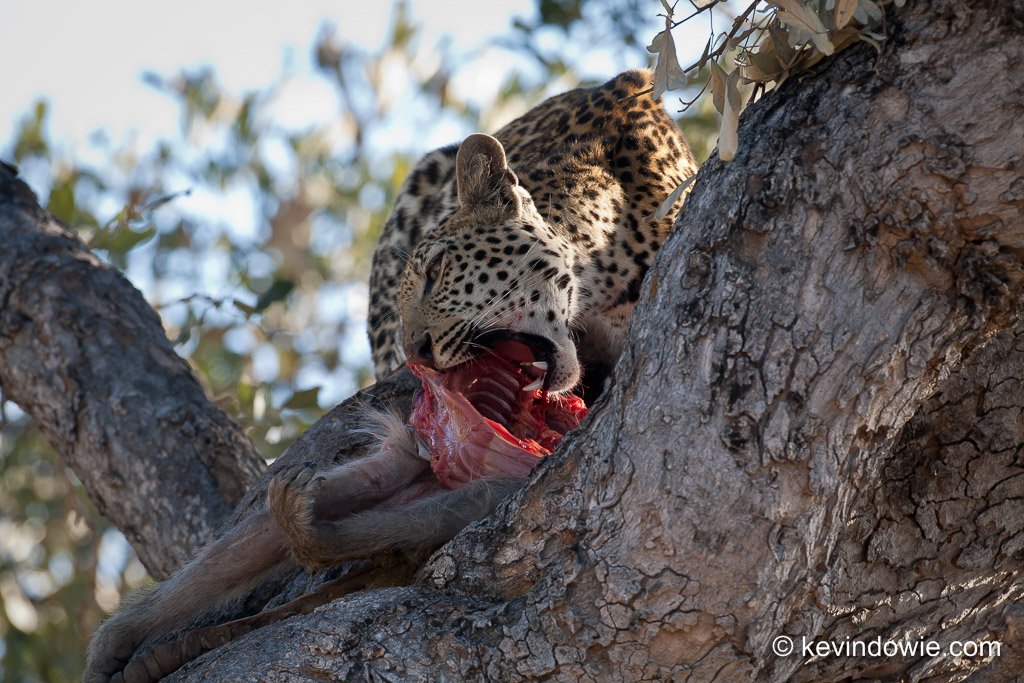
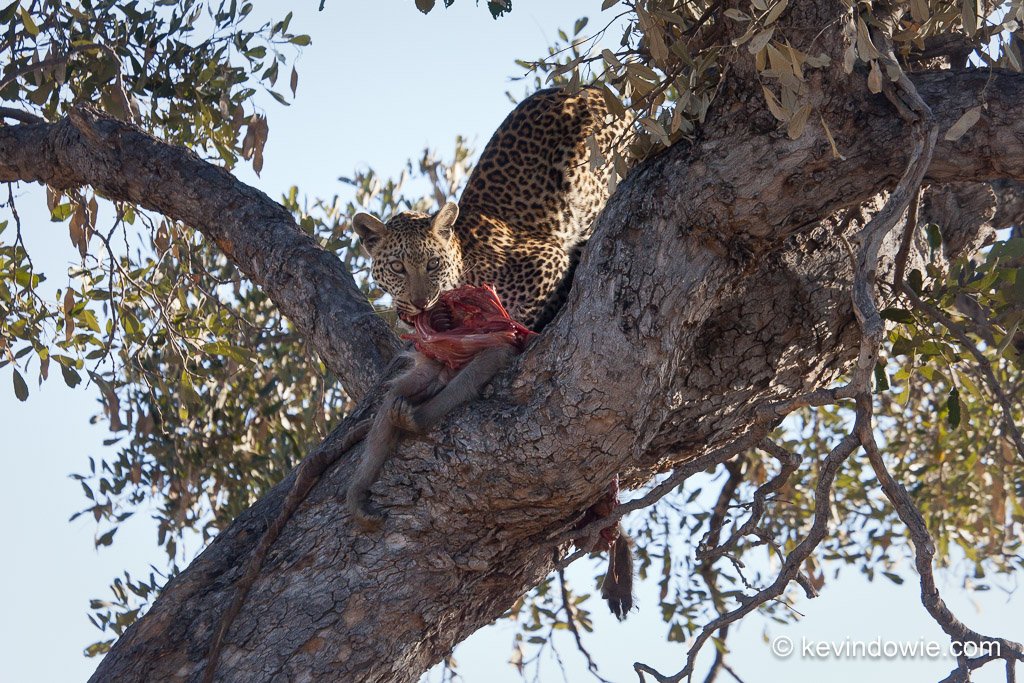
The images were captured from the safety of a safari vehicle which the leopard mostly ignored. Like most of the wildlife in the Delta, the leopard has seen such vehicles before and doesn’t recognize it as either food or as a threat and so ignores it. The wildlife here is of course protected from hunting, which means it’s possible to get reasonably close without disturbing the wildlife nor influencing its behaviour. This leopard was approximately 15 metres from our vehicle at the time.
There are several considerations when photographing leopards, mostly relating to the fact that they are generally seen in trees. The first challenge is getting a clear view through the branches, twigs and leaves. This is where a smart safari vehicle driver is important to position the vehicle as well as possible. The second issue is the light. Often the background will be open sky and so it’s difficult to avoid a bright or “hot” background, overcast conditions should they occur are a blessing. Further, being in a tree means that the light falling on the scene will be broken or dappled. A slight movement, even just turning its head, will move the leopard’s face from brightly lit to shaded.
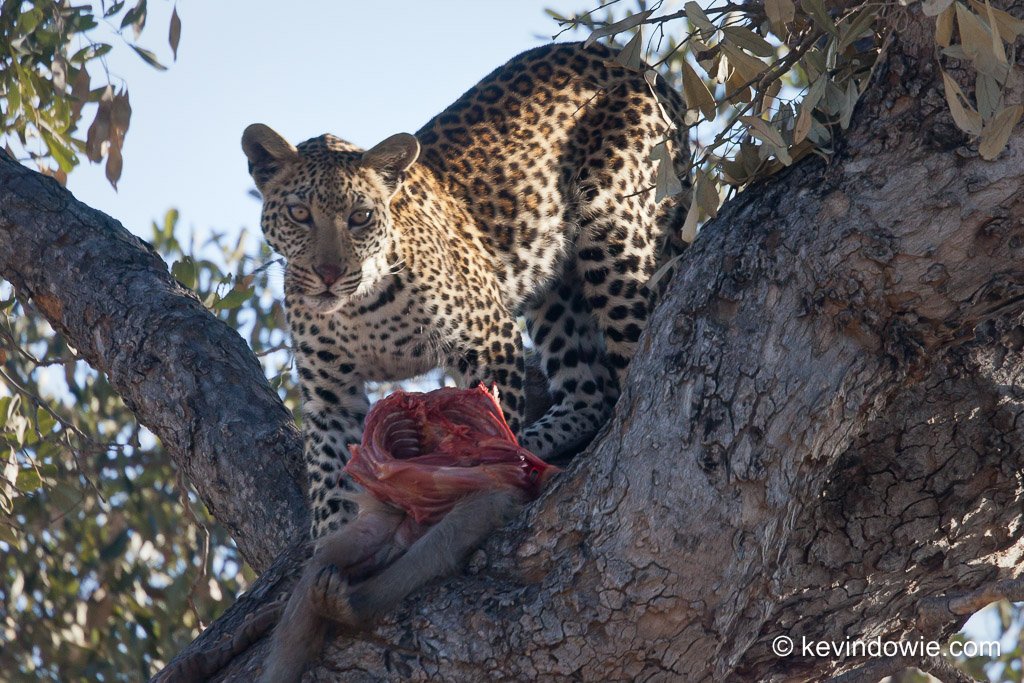

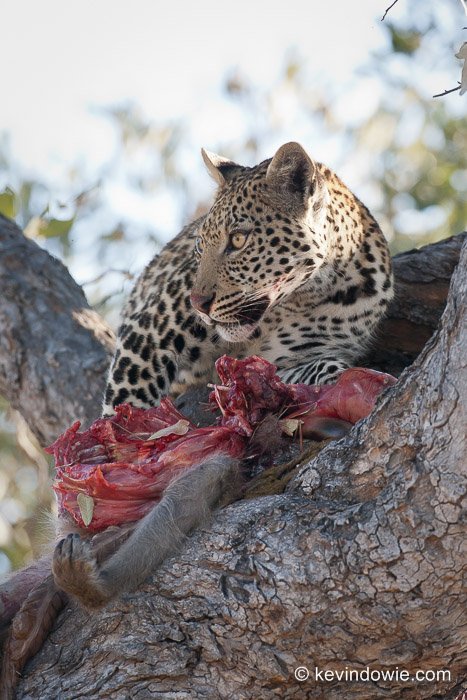

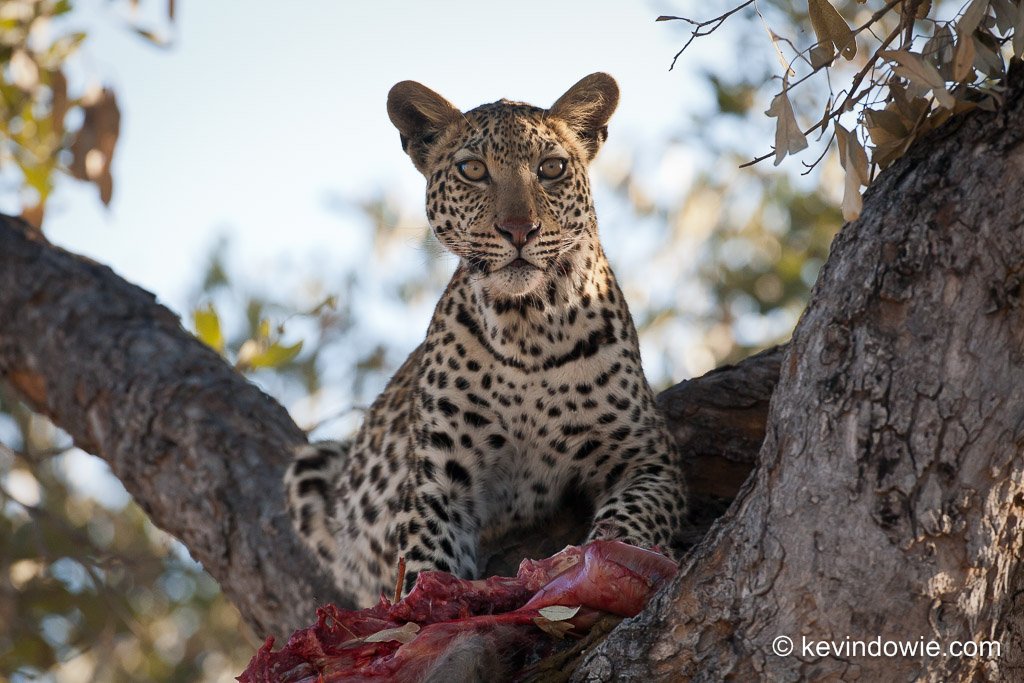



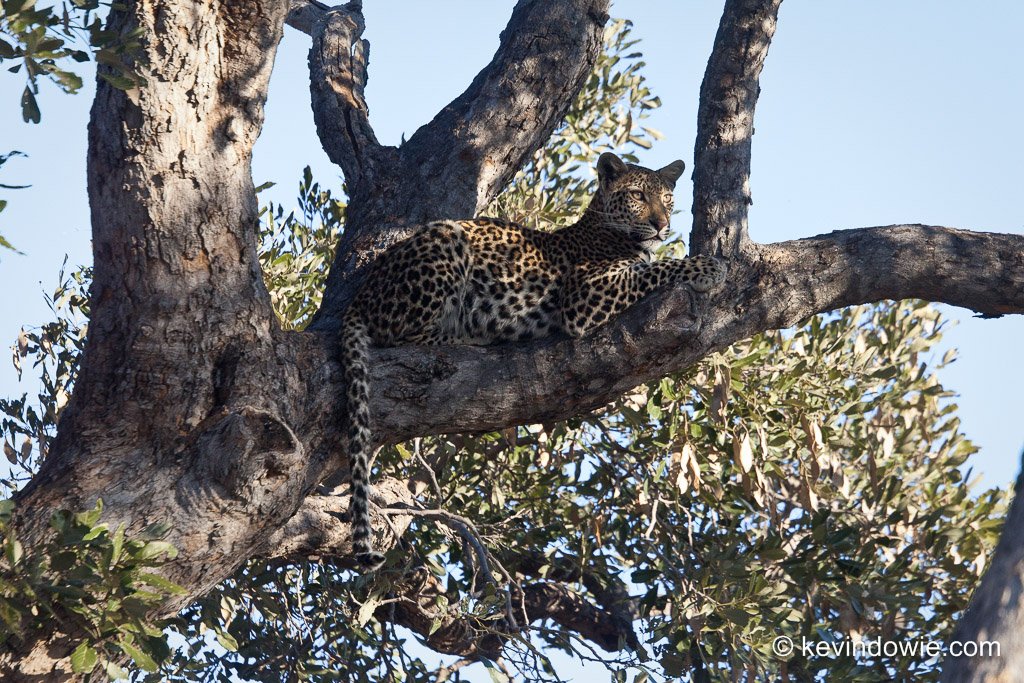
Camouflage, the spots help to break up the leopard’s outline amongst the leaves. When photographing people I’m constantly reminded to avoid clipping off people’s fingers and toes, when photographing leopards you’re mindful of the tail!
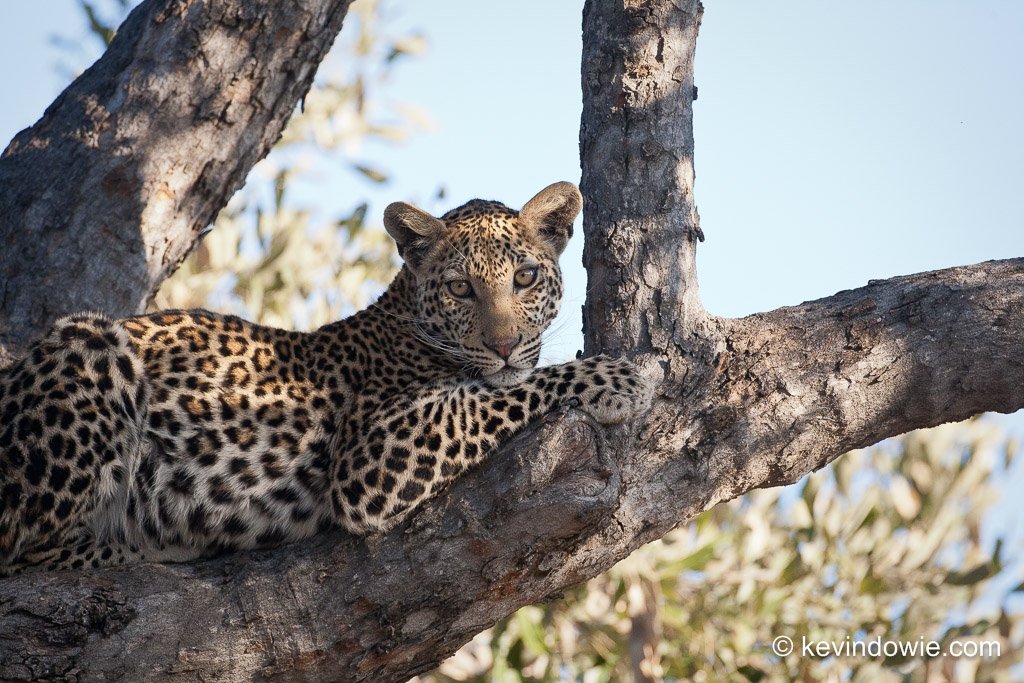
Ears and eyes. When taking an animal portrait, such as the image above, it sure helps to have both the eyes and ears visible and all facing the camera, clearly defined whiskers and nice catch-lights in those eyes helped too.
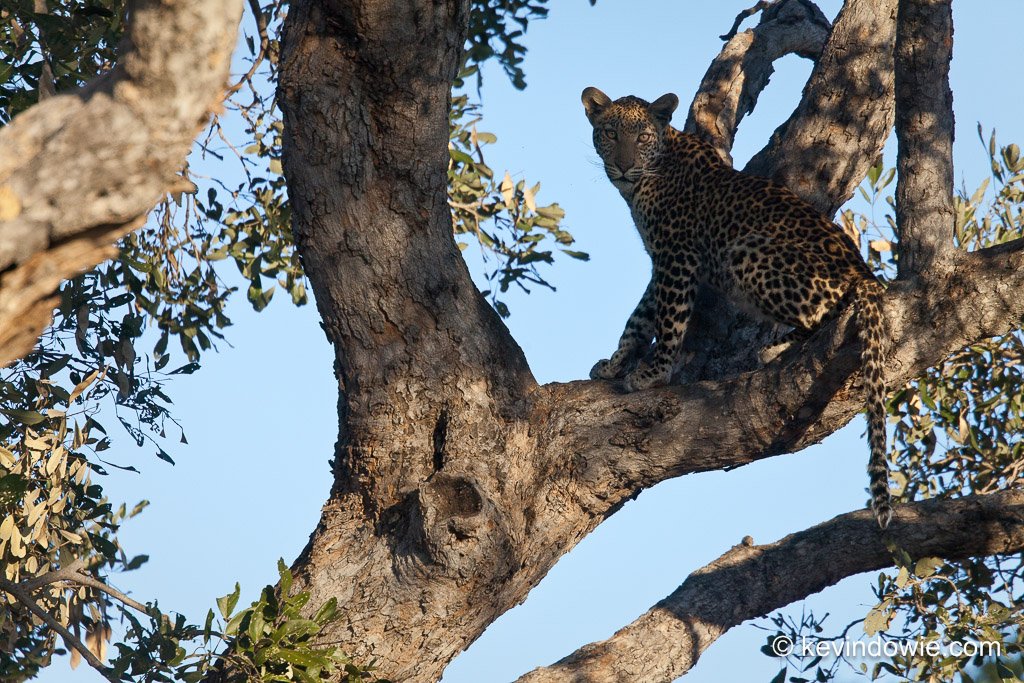
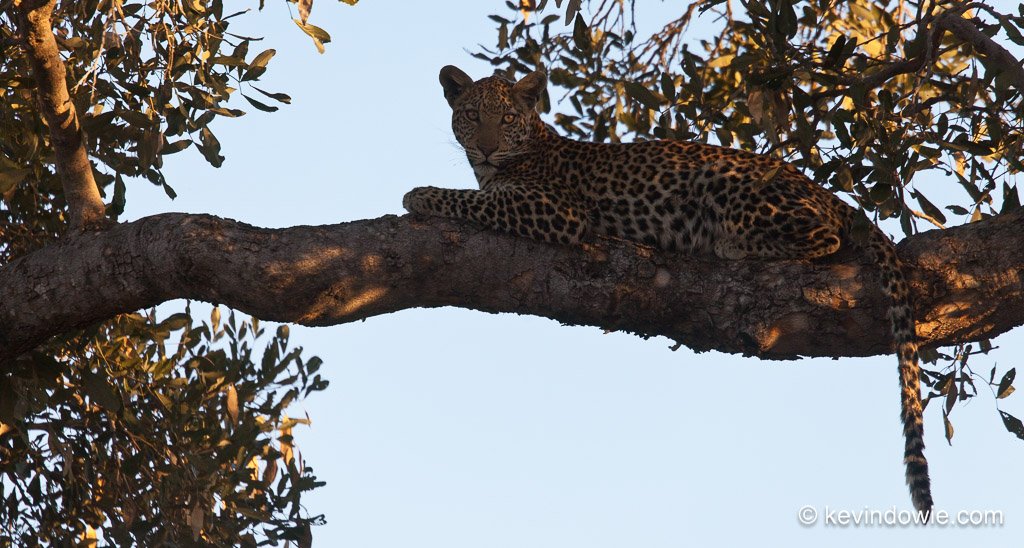
Bright background sky and leopard mostly in shadow, not ideal from a photographic perspective, but this is nature, not a studio setting. If one word could define a leopard that word may well be stealth, it is what it is!
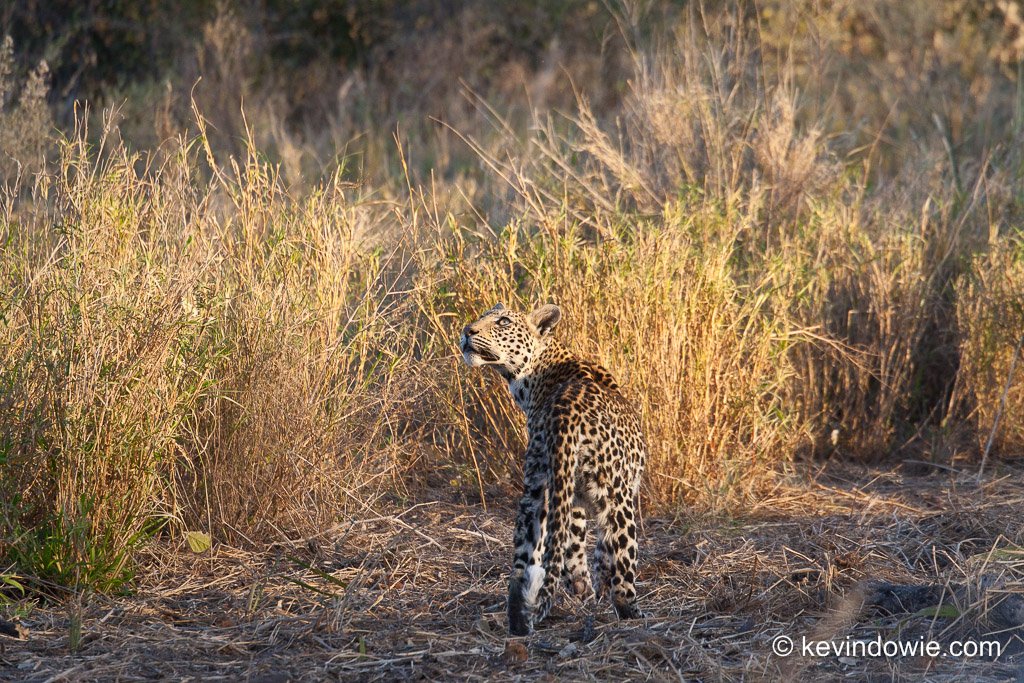
Nearing the end of the day, the leopard takes a look back at its tree and the remains of its kill before setting off to explore and patrol its territory.

These photographs are part of the Botswana image gallery. ~KD.
